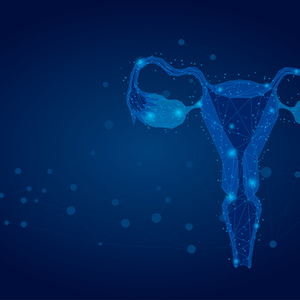
What is cancer of the uterus?
Cancer of the body of the uterus (corpus carcinoma) always develops in the lining of the uterus (endometrium). The malignant tumour lines the inside of the uterus, which is why it is often called cancer of the endometrium. Uterine cancer is one of the most common cancers of the female genital organs.
What are the causes of cancer of the uterus and how can you protect yourself?
In addition to age, especially after the menopause, obesity, high blood pressure, diabetes mellitus and the use of hormone preparations containing oestrogen are among the main risk factors for cancer of the uterus. However, childlessness, early onset of the menstrual period (menarche), late onset of the menopause or long cycles without periods can also promote the development of cancer of the uterus. In addition, hereditary factors should not be disregarded. These include, for example, the so-called Lynch syndrome (HNPPC), which favours bowel cancer at an early age and, in addition to the development of cancer of the uterus, can also cause ovarian cancer or other types of cancer.
The pill, or taking a combined progestogen and oestrogen preparation, protects against the development of cancer of the uterus, especially in young age. But sufficient physical activity and pregnancy can also prevent the development of cancer of the uterus.
What role does oestrogen play in the development of cancer of the uterus?
The hormone oestrogen is produced mainly in the ovaries and in fatty tissue and promotes the growth of glandular cells on the lining of the uterus. During the menstrual cycle, the effect of oestrogen decreases due to the production of gestagens. Gestagens, which are produced after ovulation, belong to the second type of female sex hormones. A woman's menstrual cycle also causes the mucous membrane to be shed, which prevents degeneration.
Doctors see the hormonal change during the menopause as a frequent cause for the development of cancer of the uterus. During the menopause, the female body stops producing progestins, while oestrogens continue to be produced. If these act on the lining of the uterus for a long time, this can cause a malignant tumour to develop.
How can cancer of the uterus be detected early?
In the early stages of cancer of the uterus, there are usually no other symptoms apart from unusual bleeding from the vagina. Unusual bleeding after the menopause should therefore be taken particularly seriously. Only when the cancer of the body of the uterus has spread to the neighbouring organs can there be pain in the pelvis, discomfort when urinating or irregular bowel movements. Unfortunately, the chances of curing cancer of the uterus are poor at this stage. However, this type of cancer can be treated well, especially in the early stages. Women should therefore attend regular check-ups with their gynaecologist for early detection of cancer, especially after the menopause. If women have a higher hereditary risk of developing cancer of the uterus, extra intensified early detection programmes are offered. In addition, the uterus and, if necessary, the ovaries can also be surgically removed as a preventive measure.
How is cancer of the uterus treated?
Cancer of the uterus is almost always removed surgically. In some cases, radiotherapy or chemotherapy is ordered afterwards. However, cancer of the uterine corpus can still be a very serious illness even after successful treatment. In addition to pain and symptoms of exhaustion, there can also be an increased susceptibility to infections. However, many of these side effects can be alleviated or cushioned by appropriate medical support.
